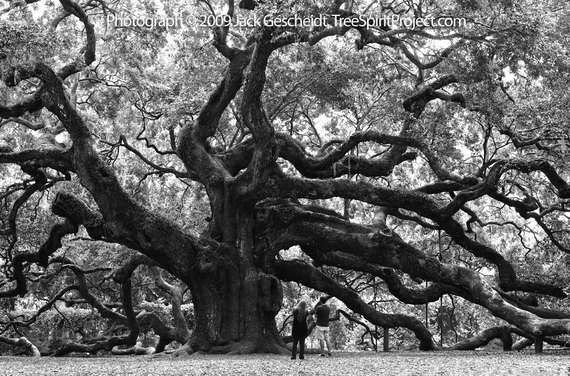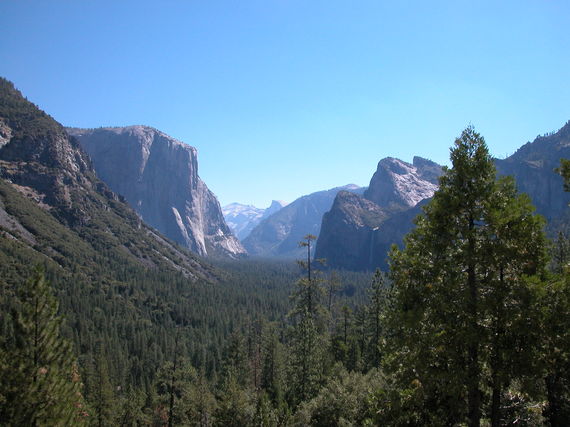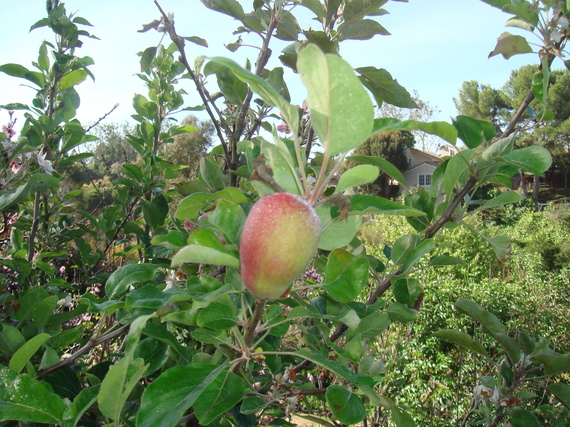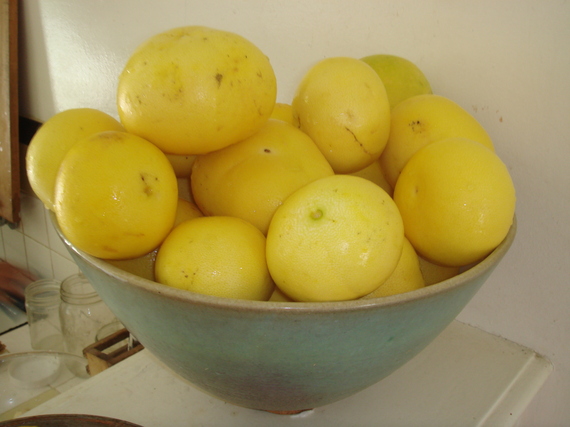Earth Week is a magnificent time to celebrate trees. Let me to tell you why trees are so remarkable.
Trees are tremendous! Celebrate their importance to life on our planet with Earth Dr Reese Halter in this segment of SOS from Los Angeles, California.
Every tree in the world participates in many biological processes, but the most notable one is photosynthesis. Tree leaves absorb carbon dioxide from the atmosphere, mix it with water, convert it into sugar using the sun's energy and give off oxygen as a by-product. Carbon is stored in the wood during the process. In fact, trees are the greatest CO2 warehouses to have ever evolved on Earth. For every metric ton of wood created, 1.5 metric tons of CO2 is absorbed and 1 metric ton of oxygen is released.
Imagine the most perfect tree on Earth: one that out does all others in magnificence, size, height, productivity, architecture, ability to draw thousands of gallons of water, yet marvelously resist drought, fire, insects, disease, mudslides, flooding, wind; and they possess exquisite biodiversity in their crowns. Then, and only then, as John Muir put it, "you'd know the king of their race" - the immortal Sequoia sempervirens, otherwise know as the coastal redwood. Notice the scientist half way down the tree trunk, giving scale to the enormity of these colossal monarchs. Photo credit: Professor Steve Sillett, Humboldt State University.
Trees save each city on Earth tens of millions of dollars in stormwater runoff protection. Trees catch rainfall and billions of roots absorb water and regulate its flow to sewers. Mature trees placed strategically around homes, schools, and factories reduce both heating and cooling costs by as much as 40 percent.
Moreover, mature trees improve urban air quality by filtering air: Ravines and parks absorb 85 percent of the city's air pollution. One mature tree produces enough oxygen in a year for a family of four.
A mature oak tree can grow 121 feet tall supporting a crown 121 feet wide and provide habitat for over five thousand different species of plants, animals, insects, fungus and bacteria. Including 40 species of wasps - cynipines - that create ping-pong ball-sized growths or galls on oak branches. These wasps have been associated with oaks for the past 30 million years. Photo credit: philipcarrgomm.wordpress.com
Trees also provide a tremendous noise buffer, offer a habitat for a host of urban critters, including honeybees. They even help improve property values by up to 20 percent. Interestingly, studies show that consumers shopping on streets lined with mature trees tend to shop longer and spend more.
In the wild, our forests provide massive watersheds all throughout western North America that support 55 million people. Those mature subalpine forests help retain snowfall in the winter and slowly release melt-waters in the springtime that recharge reservoirs. Trillions of tree roots provide the most effective form of water filtration known to humankind.
John Muir was the grandfather of conservation, legendary ecologist and inspirational poet. His writings on Yosemite are sublime. Take your family to Yosemite and your children will never forget the crisp, clean air or the sounds of mountain birds. John Muir wrote, "Everybody needs beauty as well as bread, places to play in and pray in, where nature may heal and give strength to body and soul alike. Keep close to Nature's heart... and break clear away, once in a while, and climb a mountain or spend a week in the woods. Wash your spirit clean. When one tugs at a single thing in nature, he finds it attached to the rest of the world." Photo credit: Ryan Halter circa 2004.
Trees provide scrumptious spices including cinnamon -- known to lower our blood sugar.
Trees grow incredible fruits like bee-pollinated apples with apple-skin being one of the highest recognized natural fibers that helps prevent colon cancer.
There are than 2,500 varieties of bee-pollinated apples grown across the United States and about 7,500 kinds of apples that grow around the world. The top apple producers are: China, United States, Turkey, Poland and Italy. Apples account for 50 percent of international deciduous fruit tree production. Apples contain no fat, sodium or cholesterol and are an excellent and necessary source of fiber. Did you know that apples ripen six to 10 times faster at room temperature than if they are refrigerated? Photo credit: Earth Dr Reese Halter.
In California, trees provide us with bee-pollinated lemons, oranges and grapefruits; we grow more bee-pollinated almonds than anywhere else in the world. Almonds are an excellent source of protein and fiber. And let's not forget that California is also a world producer of bee-pollinated avocados -- rich in Omega-3s that help prevent coronary disease.
Trees produce potent medicines. From the South American cinchona trees, the drug quinine was derived to help fight the mosquito-borne disease -- malaria. From the Pacific Northwest yew tree came taxol -- the multi billion-dollar blockbuster drug that offers hope to those afflicted with breast, ovarian and lung cancers, coronary disease and even AIDS. From the Chinese Camptotheca trees, camptothecin is being trialed for breast, prostate, pancreas, ovarian, leukemia, and lymphoma cancers as well as malignant melanoma.
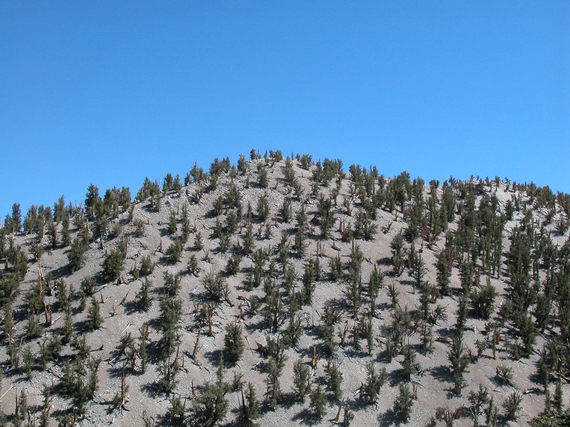
It seems fitting that the oldest trees on Earth, Great Basin bristlecone pines, should be living on layers of rock that started as sand and mud or shells deposited on the bottom of a shallow, warm sea 600 million years ago. The White Mountains are the second highest in California next to the Sierra Nevada's and the third-highest peak at 14,246 feet above sea level. Being located just east of the Sierra's means that the White Mountains are dry. Most of the scant precipitation falls as snow, the remainder comes as isolated thunderstorms. Photo credit: Ryan Halter circa 2004.
The oldest single stemmed tree is a Great Basin bristlecone pine named Methuselah. Methuselah lives in east-central California on the White Mountains almost two miles above sea level in an extreme environment. Methuselah is bombarded by high doses of ultra violet radiation. Methuselah is blasted regularly by 80 mile an hour winds and a growing season of about 6 weeks a year. Methuselah is 4,850 years old and witnessed more than 1.77 million sunrises. The tree rings that Methuselah lays down, almost ever year, are a living window back in time assisting climate and tree scientists understand how life is attempting to adapt to unprecedented global warming.
Global warming is a citizens' issue and, in fact, each of us is required to lend a helping hand. That means taking ownership of all our urban trees, including watering them during drier, hotter summers.
In March and April our glorious grapefruit tree in Los Angeles offers us some of the sweetest fruit I have ever tasted. Grapefruit is a rich source of antioxidants, phytonutrients including lycopene and flavonoids that make it highly beneficial to protect from cancer. Grapefruit contains high amount of Vitamin C, which protects the body by destroying toxic, free-radicals. Grapefruits are also effective at reducing vascular inflammation caused by arthritis, osteoporosis and asthma. Photo credit: Earth Dr Reese Halter
During this Earth Week, make it a fun family project and plant an apple tree (or any other fruit tree) in your yard. It will provide an important source of nectar and pollen for the urban bees, and in return delicious autumn bounty for your family, friends and neighbors.
Earth Dr Reese Halter is a broadcaster, biologist, educator and author of the upcoming book Shepherding the Sea: The Race to Save Our Oceans.


